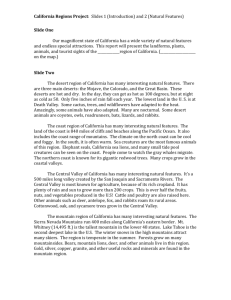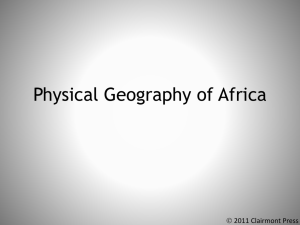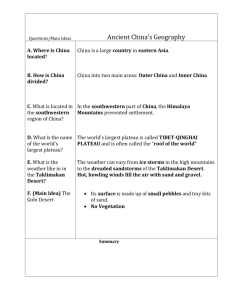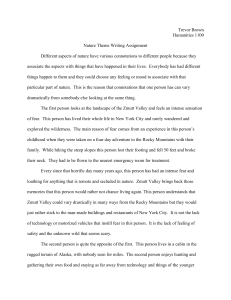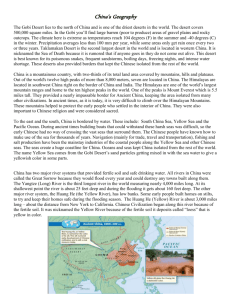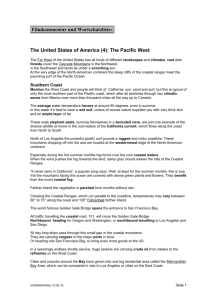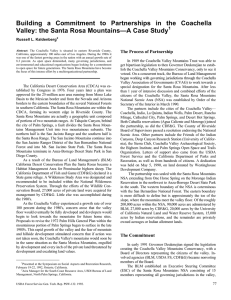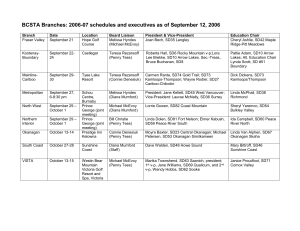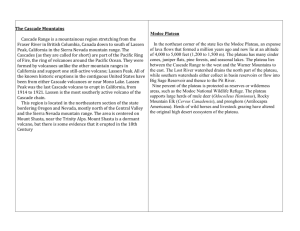Name
advertisement
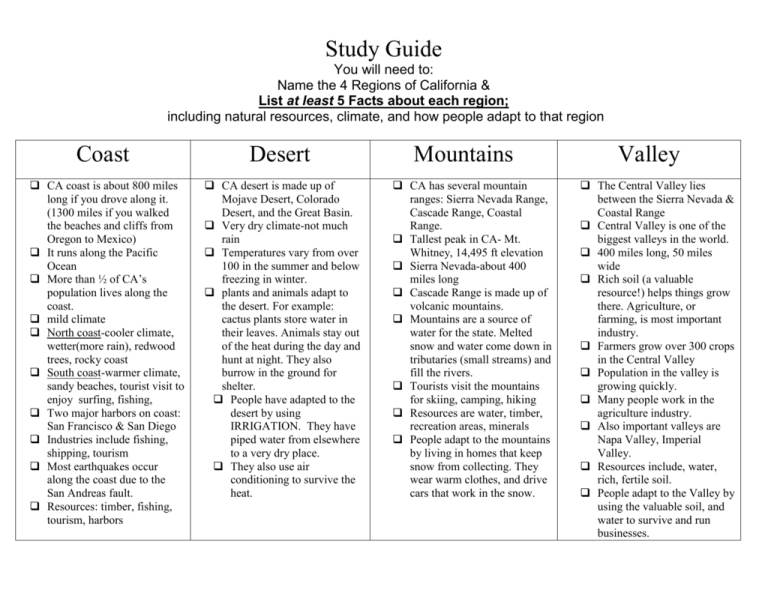
Study Guide You will need to: Name the 4 Regions of California & List at least 5 Facts about each region; including natural resources, climate, and how people adapt to that region Coast CA coast is about 800 miles long if you drove along it. (1300 miles if you walked the beaches and cliffs from Oregon to Mexico) It runs along the Pacific Ocean More than ½ of CA’s population lives along the coast. mild climate North coast-cooler climate, wetter(more rain), redwood trees, rocky coast South coast-warmer climate, sandy beaches, tourist visit to enjoy surfing, fishing, Two major harbors on coast: San Francisco & San Diego Industries include fishing, shipping, tourism Most earthquakes occur along the coast due to the San Andreas fault. Resources: timber, fishing, tourism, harbors Desert CA desert is made up of Mojave Desert, Colorado Desert, and the Great Basin. Very dry climate-not much rain Temperatures vary from over 100 in the summer and below freezing in winter. plants and animals adapt to the desert. For example: cactus plants store water in their leaves. Animals stay out of the heat during the day and hunt at night. They also burrow in the ground for shelter. People have adapted to the desert by using IRRIGATION. They have piped water from elsewhere to a very dry place. They also use air conditioning to survive the heat. Mountains CA has several mountain ranges: Sierra Nevada Range, Cascade Range, Coastal Range. Tallest peak in CA- Mt. Whitney, 14,495 ft elevation Sierra Nevada-about 400 miles long Cascade Range is made up of volcanic mountains. Mountains are a source of water for the state. Melted snow and water come down in tributaries (small streams) and fill the rivers. Tourists visit the mountains for skiing, camping, hiking Resources are water, timber, recreation areas, minerals People adapt to the mountains by living in homes that keep snow from collecting. They wear warm clothes, and drive cars that work in the snow. Valley The Central Valley lies between the Sierra Nevada & Coastal Range Central Valley is one of the biggest valleys in the world. 400 miles long, 50 miles wide Rich soil (a valuable resource!) helps things grow there. Agriculture, or farming, is most important industry. Farmers grow over 300 crops in the Central Valley Population in the valley is growing quickly. Many people work in the agriculture industry. Also important valleys are Napa Valley, Imperial Valley. Resources include, water, rich, fertile soil. People adapt to the Valley by using the valuable soil, and water to survive and run businesses.
